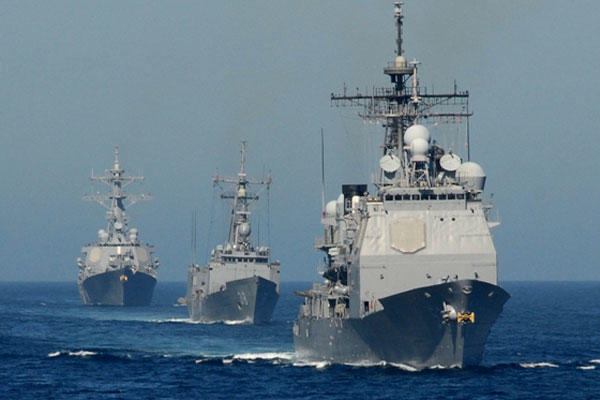Senior Pentagon officials acknowledged for the first time that China is placing weapons on artificially constructed islands in the South China Sea in an apparent attempt to assert more control and claim more territory in the region.
"We can confirm that we have identified some weapons on one of these reclaimed Chinese islands," a Pentagon official said Tuesday.
The admission comes as Defense Secretary Carter announces a new Southeast Asia Maritime Security Initiative designed to support a Senate Armed Services Committee proposal to arm and equip U.S. allies in the Asia Pacific.
"Thanks to the leadership of the Senators here today and others, Congress has taken steps to authorize up to $425 million dollars for these maritime capacity-building efforts," Carter said Saturday in a speech in Singapore.
Carter was referring to new language, inserted into the 2016 defense bill by SASC Chairman Sen. John McCain, R-Ariz., that seeks to provide funds to train and equip allied countries in the Pacific such as Indonesia, Malaysia, the Philippines, Thailand and Vietnam.
The new funding for U.S. allies in the Pacific appears to be a deliberate effort to counter, mitigate or deter Chinese activities in the region. Carter's new initiative is taking place within the context of China's continued effort to build artificial land areas in the Spratly Islands in the South China Sea.
The Spratly Islands includes an area of more than 750 reefs, small islands and atolls in the South China Sea off the coasts of the Philippines, Malaysia and Vietnam. Highly disputed for centuries, the area is rich in oil and natural gas. Countries claiming rights to territory in the Spratly Islands include China, Malaysia, Vietnam, Philippines, Taiwan, and Brunei.
The South China Sea includes strategically vital waterways, important to international trade. In a recent speech in Hawaii, as part of a trip through the Asia Pacific region, Carter criticized China's artificial island-building and said the U.S. would not be deterred by China's moves.
In his recent speech in Singapore, Carter said China's actions to build artificial land areas is out of sync with established international rules and therefore holds no legitimacy.
"With its actions in the South China Sea, China is out of step with both the international rules and norms that underscore the Asia-Pacific's security architecture, and the regional consensus that favors diplomacy and opposes coercion. These actions are spurring nations to respond together in new ways," Carter added.
Carter said the China has reclaimed over 2,000 acres of area over the last 18 months, more than all other claimants in the region combined.
What is an island?
Preferring to call them "artificial features" rather than "islands" or "territories," Pentagon officials say China's attempted island and outpost building does not bolster any legitimate territorial claims in the region -- according to established international conventions.
Under the U.N. Convention on the Law of the Sea, negotiated in the 1980s and updated in the 1990s, an island is defined as a "naturally formed area of land above the water at high tide." Also, article 60 of the U.N. Convention says "artificial islands are not entitled to territorial seas."
According to the U.N. treaty, there are no provisions granting rights to waters without regard to land-based sovereign rights. The U.N. treaty specifies that territorial waters extend for 12 miles off of the coast of sovereign territory. This means that, while other countries have a right to peaceful innocent passage within the 12 miles, the waters are regarded as an extension of the territory of the country, a Pentagon official explained.
However, according to the U.N. treaty, 12 miles water off the shore of an artificial structure - something which does not meet the definition of an island-- would not be regarded as an extension of a country's territory, Pentagon officials explained.
"The United States is deeply concerned about the pace and scope of land reclamation in the South China Sea, the prospect of further militarization, as well as the potential for these activities…to increase the risk of miscalculation or conflict among claimant states," Carter said.
Carter also acknowledged that many countries in region have claimed or developed outposts in the South China Sea but stressed that China's actions differ substantially in scope and degree.
"In the Spratly Islands, Vietnam has 48 outposts; the Philippines, eight; Malaysia, five; and Taiwan, one. Yet, one country has gone much further and much faster than any other. And that's China," Carter said.
The U.N. treaty also specifies that up to 200 miles off the coast of a country is considered part of an economic exclusive zone, or EEZ. This means the host country has exclusive first rights to resources and any economic related activities.
This means countries cannot, for instance, fish in the waters of an EEZ or set up an oil-drilling effort without securing the permission of the host country. However, activities within an EEZ that do not relate to economic issues are allowed as part of the freedoms associated with the high seas, Pentagon officials explained.
-- Kris Osborn can be reached at Kris.Osborn@military.com




























